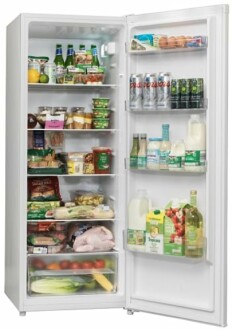
Comparing Traditional vs. Energy Efficient Heaters
Key Takeaways
- Energy-efficient heaters can lead to substantial long-term savings on utility bills.
- Traditional heating systems often have lower initial costs but may incur higher operational expenses.
- Assessing the right heating system for your needs involves considering efficiency ratings, installation costs, and maintenance requirements.
Heating your home can be a costly endeavor, especially during the cold winter months. Understanding the difference between traditional and energy-efficient heaters is crucial for making informed decisions that can save you money and reduce your carbon footprint. In this article, we'll provide a detailed comparison of the two, highlighting the pros and cons of each option, as well as insights into potential long-term savings.
Understanding Traditional Heating Systems
Traditional heating systems include furnaces and radiators that rely on fuel sources like natural gas, propane, or electricity. While these systems have been used for decades and may be familiar to many homeowners, they tend to be less energy efficient than newer alternatives.
Common Types of Traditional Heaters
- Furnaces
- Baseboard heaters
- Wall heaters
- Radiators
Pros
- Lower initial installation costs.
- Widely available and easy to maintain.
- Can heat a home quickly during extreme cold weather.
Cons
- Higher operational costs due to energy inefficiency.
- Can create uneven heating in larger spaces.
- May require regular maintenance for optimal performance.
Exploring Energy Efficient Heaters
Energy-efficient heaters, on the other hand, use innovative technologies to heat spaces effectively while minimizing energy consumption. These systems are designed for sustainability, often providing significant savings on utility bills over time.
Different Types of Energy Efficient Heaters
- Heat Pumps
- Infrared Heaters
- Radiant Floor Heating
- High-Efficiency Furnaces
Pros
- Lower energy bills due to higher efficiency ratings.
- Environmental benefits through reduced energy consumption.
- Variety of options suitable for different home sizes and layouts.
Cons
- Higher upfront costs for installation.
- May require more time to heat spaces compared to traditional systems.
- Complex installation and maintenance may require specialized professionals.
Comparative Table of Traditional vs. Energy Efficient Heaters
| Feature | Traditional Heaters | Energy Efficient Heaters |
|---|---|---|
| Initial Cost | Generally lower | Usually higher |
| Energy Efficiency Rating | Lower efficiency | Higher efficiency |
| Operating Cost | Higher | Lower |
| Environmental Impact | Higher emissions | Lower emissions |
| Maintenance | Regular maintenance required | Specialized maintenance needed |
Long-Term Savings: Traditional vs. Energy Efficient Heaters
While traditional heaters may seem appealing due to their lower upfront costs, energy-efficient systems provide long-term savings that can outweigh initial investments:
- Energy-efficient heaters can save homeowners over 30% on energy bills annually.
- Many states offer rebates or tax incentives for homeowners who invest in energy-efficient systems.
- Higher efficiency ratings often lead to a reduced environmental impact.
Ultimately, the choice between traditional and energy-efficient heaters should be based not only on initial costs but also on long-term value, including savings on energy bills, maintenance, and potential environmental benefits.
Choosing the Right Heater for Your Home
When selecting a heating system, consider the following factors:
- Size of your home: Assess the heating capacity required.
- Heating needs: Determine whether you need whole-home heating or individual room heaters.
- Budget: Consider both upfront and ongoing costs.
- Environmental impact: Choose systems that align with your sustainability goals.
Conclusion
In the end, choosing between traditional and energy-efficient heaters will come down to personal needs and preferences. While traditional systems may be easier on the budget initially, energy-efficient heaters can lead to significant long-term savings and a smaller environmental footprint. Take the time to assess your current heating situation and consider making changes that promote sustainability in your home.
Tips for Beginners
- Research local incentives for switching to energy-efficient heaters.
- Calculate potential energy savings for different types of heaters.
- Consult with HVAC professionals to assess your home’s heating needs.
- Consider hybrid systems that utilize both traditional and energy-efficient technologies.
- Keep an eye on technological advances that could improve efficiency even further.
Additional Resources
For more information on heating systems and energy efficiency, check out these related guides:
- Energy Efficient Water Heaters
- Energy Saving Dishwashers
- Low-energy Air Conditioners
- LED Lighting and Fixtures
- Complete Buying Guides
By understanding both traditional and energy-efficient options, you will be better prepared to make a choice that is right for your home, and your wallet.
English Electric Upright Larder Fridge EEL240H 242 Litre
This spacious and energy-efficient upright fridge offers ample storage capacity and features like Low Frost Technology, making it an ideal choice for families.
Learn More